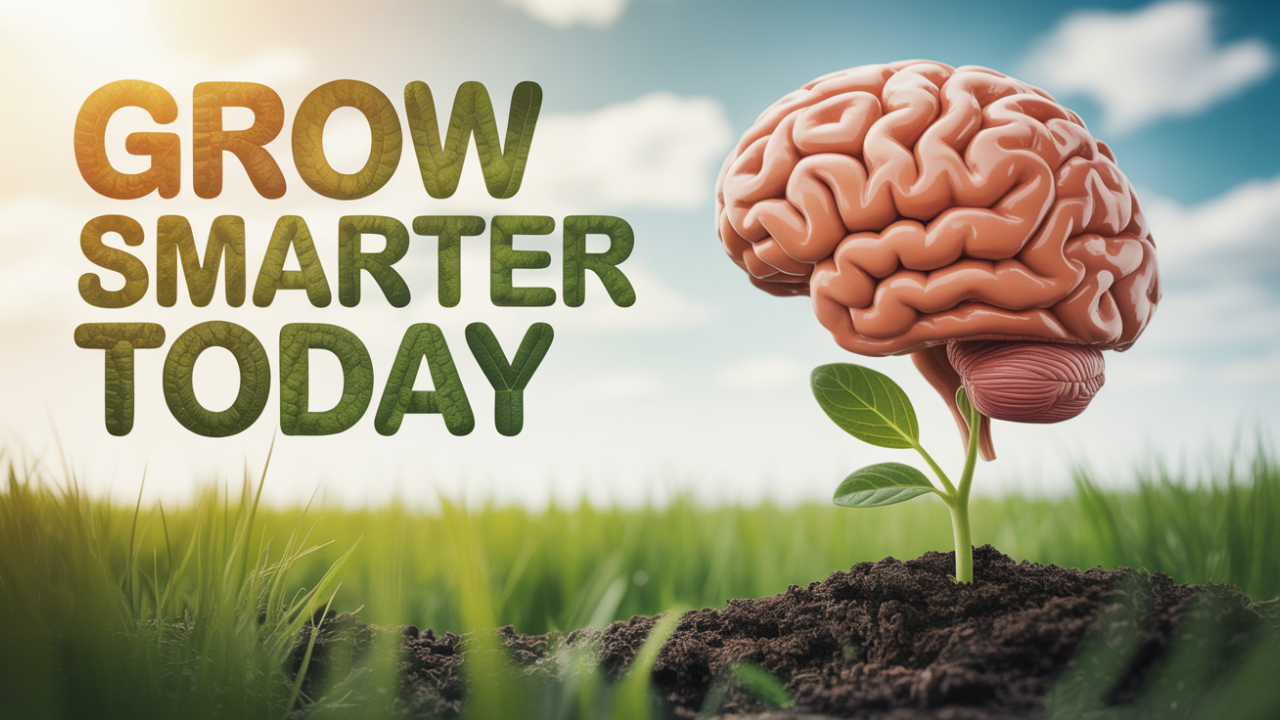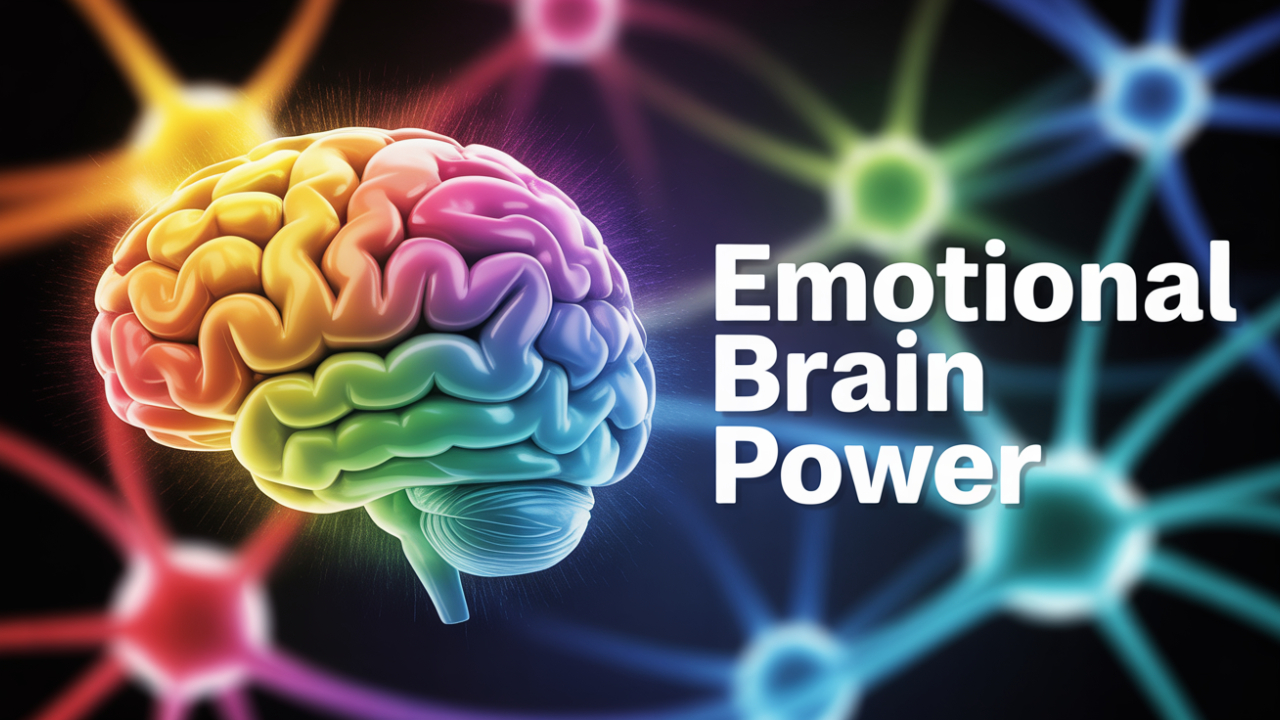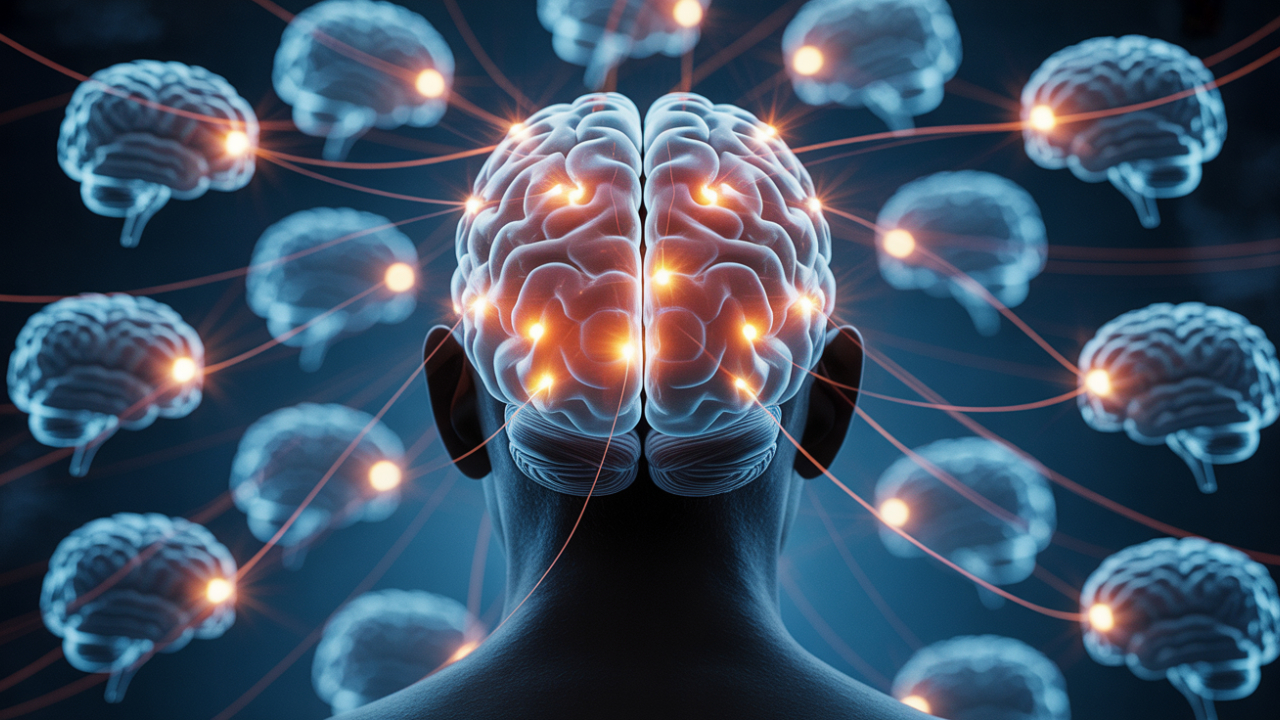Brain power is key for living successfully. Do you ever feel like your brain is running on an empty tank? That frustrating moment when you walk into a room and have no idea why you’re there? Or you sit down to work, and a thick fog just settles over your thoughts, making it impossible to focus on anything for more than a few minutes. You find yourself rereading the same line over and over, and the names of people you just met seem to vanish into thin air. It’s not just you. This experience is incredibly common, but it is absolutely not something you have to live with. What if you could change that, starting right now?
My name is Dr. Alistair Finch, and as a neuroscientist, I’ve dedicated my career to figuring out the intricate machinery of the human brain. I’ve spent years in labs and in clinical research, exploring the very things that control our focus, memory, and mental clarity. And honestly, the most exciting thing I’ve learned is that you have way more control over your brainpower than you’ve been led to believe. Your brain isn’t some fixed, unchanging organ. It’s dynamic, it’s adaptable, and it responds directly to your lifestyle. For example, did you know that just two minutes of a specific breathing exercise can instantly boost your focus and calm your nervous system? We’ll get to that exact technique later in the video.
But that’s just a warm-up. Today, we’re exploring seven science-backed, powerful ways to genuinely improve your brain’s function and boost your brain power. These aren’t fads or pseudoscience. These are evidence-based strategies, from simple dietary changes that can build a better brain, to advanced stimulation techniques that are pushing the limits of neuroscience. We’ll break down the science behind why they work and give you actionable steps you can start using immediately. So, let’s get started on this journey and unlock your mind’s full potential, beginning with the one thing you can do the moment this video is over.
This book is scientific documentary of the Kingdom of God.
Section 1: The Foundation – Master Your Sleep
The first, and you could argue the most powerful, brain power booster isn’t some rare supplement or a complex gadget. It’s something we all do, but very few of us actually get it right: sleep. For a long time, we thought of sleep as just a passive timeout for the body. But modern neuroscience shows that while you’re unconscious, your brain is doing some of its most critical and active work. Think of it as the brain’s dedicated night shift, handling essential maintenance, processing memories, and getting you ready for the day ahead with a high brain power.
One of the most vital jobs that happens during sleep is memory consolidation which increases brain power. All day long, your brain’s hippocampus is busy capturing new experiences and information, kind of like a short-term holding area. But the hippocampus has limited space. During deep sleep, your brain replays the neural patterns of these new memories, transferring them from the temporary storage of the hippocampus to the more permanent storage of the cortex. It’s like moving files from a small USB stick to a massive hard drive. Without enough good sleep, that transfer just doesn’t work well. This is why cramming for an exam all night is one of the worst things you can do for long-term memory; you might recall some of it the next day, but the information hasn’t been properly saved and will fade fast. Study after study shows that people who get a good night’s sleep after learning something perform significantly better on memory tests.
But it’s not just about saving memories; it’s also about making room for new ones. Research has uncovered a fascinating dual role of sleep. It not only solidifies the past but also primes the brain for future learning. During sleep, certain neurons synchronize their activity, essentially getting ready to encode new information the following day. Sleep creates the mental space needed to learn again.
On top of all that, your brain does a crucial cleaning process while you sleep, and it boost brain power. The brain has its own waste-disposal system, known as the glymphatic system. During the day, as your brain’s 86 billion neurons fire away, they produce metabolic waste—think of it like cellular exhaust. If this gunk builds up, it can be toxic and hurt your cognitive function. When you go into deep sleep, your brain cells actually shrink a little, which lets cerebrospinal fluid flow more freely and wash these toxins away. One of the key proteins cleared out is beta-amyloid, the same one that forms the plaques linked to Alzheimer’s disease. This is thought to be one reason why chronic sleep deprivation is associated with an increased risk of cognitive decline and neurodegenerative diseases—it’s like the nightly cleaning crew going on strike.
So, how do you master your sleep? It really starts with consistency. Try to go to bed and wake up at roughly the same time every day, even on weekends to boost your brain power. This reinforces your body’s natural sleep-wake cycle. Make sure your bedroom is cool, dark, and quiet. Your brain is extremely sensitive to light, which stops the production of melatonin, the hormone that tells your brain it’s time to wind down. Avoid the blue light from screens—phones, tablets, computers—for at least an hour before bed, as it’s especially good at messing with melatonin. Instead, create a relaxing routine. Read a real book, take a warm bath, listen to calm music, or do some gentle stretches. Also, try to avoid big meals, caffeine, and alcohol too close to bedtime. While a drink might make you feel drowsy, it actually fragments your sleep later in the night, keeping you from the deep, restorative stages your brain desperately needs. Prioritizing seven to nine hours of quality sleep isn’t a luxury; it’s a non-negotiable for increasing your brain power.
Section 2: Fueling Your Brain Power – The Neuroscience of Nutrition
If sleep is the brain’s nightly maintenance crew, then your diet is the premium fuel and raw material it needs to run at full power. Your brain only makes up about 2% of your body weight, but it’s an energy hog, using a whopping 20% of your body’s total calories. Because of this, it’s incredibly sensitive to what you eat. A lot of evidence now suggests that diet plays a huge role in our cognitive function, and that some foods can disrupt memory circuits in just a few days. So, let’s build the ideal brain-healthy diet from the ground up, based on solid science.
First, let’s talk about the brain’s structure to boost brain power. Your brain is about 60% fat, and a big chunk of that is an omega-3 fatty acid called DHA. DHA is a primary structural component of your brain cells, or neurons, especially in the cell membranes. Think of it as the high-quality bricks you need to build a strong and flexible house. These fats are vital for keeping cell membranes fluid, which is essential for neurons to send signals to each other effectively. DHA also helps produce Brain-Derived Neurotrophic Factor, or BDNF—we’ll talk more about that later—which is basically a growth factor that helps neurons survive and grow. You can find omega-3s in fatty fish like salmon, mackerel, and sardines, as well as in walnuts, flaxseeds, and chia seeds.
Next up are antioxidants. Because your brain is so metabolically active, it generates a lot of oxidative stress, which creates unstable molecules called free radicals. These free radicals can damage your cells, including your neurons, in a process that’s a bit like metal rusting. Antioxidants are the brain’s bodyguards; they neutralize these free radicals before they can do harm. The best sources are colorful fruits and vegetables. Berries, especially blueberries, are famous for their antioxidants, and studies have shown they can help delay age-related memory decline. Dark chocolate (with high cocoa content) and green tea are also packed with antioxidants that protect brain cells.
We also have to think about the brain’s energy supply and brain power. The brain loves to run on glucose, which it gets from carbs. But not all carbs are created equal. Processed, sugary foods cause sharp spikes and crashes in blood sugar, and that rollercoaster is damaging. It’s like putting cheap, explosive fuel in a high-performance engine; you get jerky performance and it wears out the machine. Your brain does much better with a steady supply of glucose from complex carbs like whole grains, quinoa, oats, and legumes. These release glucose slowly, providing sustained energy for focus all day long.
B vitamins—like B6, B12, and folate—are also key players. They help with countless processes in the brain, including making energy and synthesizing neurotransmitters, the chemical messengers that neurons use to talk to each other. Deficiencies in these vitamins have been directly linked to cognitive issues and mood disorders. You can find them in leafy greens like spinach and kale, as well as in eggs and legumes.
And finally, don’t forget the simplest nutrient: water. Even being mildly dehydrated can cause brain fog, hurt your concentration, and mess with your short-term memory. Your brain needs water to function, period.
The science seems to be pointing toward dietary patterns like the MIND diet, which is a mix of the Mediterranean and DASH diets. It specifically focuses on brain-healthy foods: daily servings of green leafy vegetables, a handful of nuts, and berries at least twice a week. It also recommends cooking with olive oil and eating fatty fish weekly. On the flip side, it advises limiting foods that aren’t great for the brain, like red meats, sweets, and fried or processed foods. Following a diet like this isn’t about a short-term fix; it’s a long-term strategy for building a sharper, more resilient brain for years to come.
Section 3: The Power of Movement – Exercise and the Brain power
For a long time, we saw exercise mostly as something for the body—for building muscle, helping the heart, boosting brain power and managing weight. But one of the most exciting discoveries in neuroscience is that exercise is also one of the most transformative things you can do for your brain. In fact, you can think of regular physical activity as a powerful growth stimulant for your mind, changing its structure and function for the better.
So, what’s going on in your brain when you exercise? The first thing that happens is an increase in blood flow. When you get your heart rate up, you’re pumping more oxygen and nutrients to your brain cells. It’s like upgrading the delivery service to your brain, making sure every neuron gets what it needs. This boost in blood flow helps new brain cells grow and strengthens the connections between existing ones which boost your brain power.
But it goes much deeper than that. One of the biggest benefits of exercise is that it stimulates a protein called Brain-Derived Neurotrophic Factor, or BDNF. I mentioned it before, but it’s worth a closer look. If you think of your brain as a garden, BDNF is like a powerful fertilizer. It’s a key molecule in neuroplasticity—the brain’s ability to rewire itself by forming new connections. BDNF helps existing neurons survive, promotes the growth of new ones, and helps form new synapses, which are the communication points between neurons. Higher levels of BDNF are linked to better learning, memory, and mental flexibility. And regular exercise is one of the best ways to naturally increase it.
Recent research has even started to figure out how this works. When your muscles work hard during a workout, they produce lactate. That “burn” you feel is a sign lactate is building up. Well, it turns out lactate isn’t just a waste product; it’s a signal that travels to the brain and helps trigger the release of BDNF. So when you push through that discomfort, you’re literally telling your brain to grow stronger.
Exercise also has powerful anti-inflammatory effects. We’re learning that chronic inflammation is a major player in cognitive decline and neurodegenerative diseases. Physical activity helps reduce inflammation all over the body, including in the brain, which creates a healthier environment for your neurons.
So, what kind of exercise is best to boost brain power? The good news is that lots of different types have brain benefits. Aerobic exercise—like running, swimming, or cycling, that gets your heart rate up for a while—is great for increasing blood flow and BDNF. But resistance training, like lifting weights, is also incredibly beneficial. And some studies suggest that mixing both aerobic and resistance training might be the best strategy for long-term brain health. Even High-Intensity Interval Training (HIIT), with its short bursts of all-out effort, is a powerful way to trigger that release of lactate and BDNF.
Even activities that require complex coordination, like dancing or martial arts, give your brain a unique challenge. They engage multiple brain regions involved in memory, timing, and decision-making, giving your brain a workout right along with your body. Research has even shown that activities like dancing can lead to measurable increases in the brain’s gray matter.
The key is consistency. Aim for at least 150 minutes of moderate-intensity aerobic exercise, plus two days of strength training each week, as recommended by the Physical Activity Guidelines for Americans. And if you can, think about exercising in the morning. A morning workout can give you a cognitive edge that lasts for hours, right when you need it for work and learning.
Section 4: Targeted Training – Nootropics and Supplements
Now we’re getting into one of the most hyped-up and controversial areas of cognitive enhancement: nootropics. The term “nootropic” was coined back in the 70s and refers to substances that supposedly enhance cognitive function, like memory, creativity, or focus. The market is flooded with pills and potions promising to make you smarter and sharper. But what does the science actually say? Can a pill really boost your brainpower? The answer is complicated, and it calls for a bit of healthy skepticism.
First, let’s be crystal clear: no supplement can replace the foundational benefits of good sleep, a healthy diet, and regular exercise. If those things aren’t in place, you’re trying to build a skyscraper on a foundation of sand. But, once those fundamentals are solid, some supplements *might* offer modest, targeted benefits. The trick is to separate the compounds with good scientific evidence from those with little more than clever marketing.
Let’s start with one of the most well-researched supplements: Omega-3s from fish oil. Like we talked about in the nutrition section, DHA is a crucial building block for the brain. If you don’t eat enough fatty fish, a high-quality fish oil supplement can help make sure your brain has the raw materials it needs. Studies suggest that long-term omega-3 intake can help support overall brain health and slow age-related cognitive decline.
Another interesting one is Creatine. It’s famous in the athletic world for boosting muscle energy, but it also plays a key role in brain energy. Your brain cells run on a molecule called ATP, and creatine helps regenerate it quickly. Some studies suggest that creatine supplements may improve thinking skills, especially when you’re stressed, sleep-deprived, or doing really demanding mental work, thus, it can boost your brain power.
Then there’s the combination of L-theanine and caffeine. L-theanine is an amino acid found in tea that promotes alpha brain waves, which are linked to a state of “wakeful relaxation.” When you combine it with caffeine, L-theanine seems to smooth out the jittery edge of the caffeine while keeping its alertness-boosting effects. This combo can lead to better focus and attention, without the usual anxiety.
Herbal supplements like Bacopa Monnieri and Ginkgo Biloba have been used in traditional medicine for centuries. Bacopa has shown some promise in clinical trials for improving memory, though its effects are slow and can take several weeks to appear. Ginkgo has a more mixed report card. While some studies suggest it might offer small benefits for people with mild dementia, the evidence for it working in healthy people isn’t very strong. Lion’s Mane mushroom is another one getting a lot of attention, with some early research suggesting it may stimulate Nerve Growth Factor and could offer benefits for working memory, but strong evidence from large-scale human trials is still needed.
You really have to be careful here. Many nootropics on the market just don’t have rigorous clinical evidence to back them up. The industry isn’t regulated like pharmaceuticals, so the quality and dosage of supplements can be all over the place. The American Medical Association has even discouraged using prescription cognitive enhancers for non-medical reasons due to safety concerns and a lack of solid evidence.
My advice as a neuroscientist is this: master the fundamentals first. Once your sleep, diet, and exercise are dialed in, if you still feel you need an edge, you can cautiously explore a few well-researched options. Stick with single-ingredient compounds with good evidence, like Omega-3s, creatine, or the L-theanine/caffeine combo. And always talk to a doctor before starting any new supplement. There’s no magic pill for brainpower. Real cognitive enhancement comes from a long-term commitment to healthy habits to have needed brain power.
Section 5: The Mental Gym – Cognitive Training and Novelty
One of the most beautiful and empowering ideas in neuroscience is neuroplasticity. This is the brain’s natural ability to reorganize itself in response to experience. For a long time, we thought the brain was pretty much fixed after childhood. We now know that’s just not true. Your brain is constantly changing and adapting your whole life. And just like exercising a muscle makes it stronger, challenging your brain makes it more robust and resilient. This is what I call the “mental gym.”
So, how do you work out your brain? It’s not about finding one “brain game” and playing it endlessly. Those games can make you better at that specific game, but the benefits usually don’t transfer to other areas of your life. Real cognitive training is about embracing things that are new, complex, and challenging. It’s about pushing your brain out of its comfort zone.
One of the best ways to do this is to learn a new, complex skill. Think about learning a musical instrument or a new language. These activities are fantastic for the brain because they use multiple cognitive systems at once. Learning an instrument involves motor skills, listening, memory, and pattern recognition. Learning a language challenges your memory, your executive functions for switching between different rules, and your hearing and vision centers. These complex activities force your brain to build and strengthen new neural pathways, creating a richer, more connected network. Scientists call this “cognitive reserve.” A higher cognitive reserve doesn’t stop the physical changes of aging, but it allows the brain to be more resilient and find alternate routes to get things done, which can delay the onset of symptoms.
Social interaction is another incredibly powerful form of cognitive training we often forget about. A deep conversation requires you to listen, process information on the fly, access memories, formulate your own thoughts, and read non-verbal cues. It’s a highly complex and unpredictable mental workout. Meaningful social connections have been consistently linked to better cognitive function and a lower risk of dementia.
Even small changes to your routine can help. Try taking a different route to work, brushing your teeth with your non-dominant hand, or rearranging your office. These little acts of novelty force your brain to stop running on autopilot and pay attention. They require you to build new micro-pathways and stay mentally flexible.
Reading is another excellent workout. It exposes you to new vocabulary and complex ideas, and it demands sustained focus and imagination. It forces your brain to build worlds and characters from symbols on a page, which is a pretty amazing cognitive feat.
The key is to do things that are consistently challenging, but not so hard that you give up. The sweet spot for learning and brain power and growth is right at the edge of your abilities. That’s where you’re making mistakes, correcting them, and forcing your brain to adapt. As neuroscientist Dr. Lila Landowski explains, making mistakes actually triggers a state of heightened alertness in the brain, which is perfect for learning. So don’t be afraid of the struggle; that feeling of mental effort is the sign that you’re building a stronger brain. Just like in a physical gym, growth happens when you push against resistance. So, find what challenges you. Pick up that guitar, download that language app, join a book club, or learn to dance. Treat your brain like the muscle it is and give it the workout it deserves, and your brain power will increase.
Section 6: The Quick Win – The Science of Breath
At the start of the video, I promised you a technique that could give you an immediate focus boost. It’s simple, it’s free, you can do it anywhere, and it’s based on solid neuroscience. I’m talking about controlled, deliberate breathing.
Most of the time, breathing is an automatic process run by the brainstem, just happening in the background. But the fascinating part is that we can also take voluntary control of our breath, and when we do, we can directly influence our brain state. Breathing is a unique bridge between our conscious mind and our autonomic nervous system—the system that controls our “fight-or-flight” and “rest-and-digest” responses.
When you’re stressed or distracted, your breathing tends to become fast and shallow. This pattern sends a signal to your brain that there’s a threat, which activates the sympathetic nervous system—the fight-or-flight response. This releases stress hormones like cortisol, which are great for escaping danger but terrible for complex thinking and focus. High cortisol levels can impair the function of your prefrontal cortex, the part of your brain in charge of decision-making and impulse control.
By intentionally slowing down your breath, you can take control of this system to boost your brain power. When you take slow, deep breaths, especially with a longer exhale than your inhale, you activate the vagus nerve. This major nerve is a key part of the parasympathetic nervous system—the rest-and-digest system. Activating the vagus nerve sends a calming signal to your brain, basically telling it that you’re safe. This lowers your heart rate, reduces blood pressure, and brings down cortisol levels. It shifts you out of a state of high alert and into one of calm focus. Brain power is your marvelous tool to live.
One of the most effective techniques is “Box Breathing.” It’s used by Navy SEALs, athletes, and surgeons to stay composed under pressure. Here’s how you do it:
1. Inhale slowly through your nose for a count of four.
2. Hold your breath for a count of four.
3. Exhale slowly and completely through your mouth for a count of four.
4. Hold at the end of the exhale for a count of four.
Repeat this for just one or two minutes. You will feel a real shift in your mental state.
Another great technique, popularized by neuroscientist Dr. Andrew Huberman, is the “physiological sigh.” This is two sharp inhales through the nose, followed by one long, full exhale through the mouth. The double inhale helps pop open any collapsed tiny air sacs in your lungs, allowing you to offload carbon dioxide more efficiently. The long exhale then kicks in the calming parasympathetic system. Just one or two of these can be remarkably good at quieting anxiety and bringing your mind back to the present.
The power of these techniques is their immediacy for boosting your brain power. You don’t have to wait weeks for them to work. The next time you feel that wave of brain fog or anxiety before a meeting or a tough task, just stop. Take two minutes for some box breathing or a few physiological sighs. You’re not just “calming down.” You are actively changing your brain’s chemical environment, reducing the static of stress, and creating the clear conditions needed for your brain to perform at its best. It’s a direct tool to manage your brain state in real-time.
Section 7: The Future is Now – Advanced Brain Power Stimulation
We’ve covered the powerful lifestyle changes you can make every day to boost your brain power. Now, let’s look at the cutting-edge of neuroscience: directly influencing brain activity with technology. Brain stimulation is no longer science fiction; it’s being used in clinics and studied for its potential to enhance cognition. These technologies work by using electrical or magnetic energy to influence how neurons fire, with the goal of strengthening helpful brain circuits and calming down dysfunctional ones.
Let’s start with Repetitive Transcranial Magnetic Stimulation, or rTMS. Imagine a small magnetic coil placed near the scalp. It generates a focused magnetic pulse that passes painlessly through the skull and creates a tiny electrical current in a specific brain region. By applying these pulses rapidly, rTMS can either excite or inhibit the activity in that area. It’s like a way to remotely tune a brain circuit. rTMS is already FDA-approved and used as a highly effective treatment for depression. Researchers are now actively exploring it for improving memory in conditions like Alzheimer’s disease and even in healthy people.
Next is Transcranial Direct Current Stimulation, or tDCS. Compared to rTMS, tDCS is much gentler. It uses two electrodes on the scalp to pass a very weak, constant electrical current through the brain. The current is so low it doesn’t force neurons to fire. Instead, it just nudges them, making them either slightly more likely or slightly less likely to fire. Think of it as adjusting the sensitivity dial on a group of neurons. tDCS is being studied for everything from treating depression to enhancing learning. Some studies have shown that using tDCS while learning a new task can speed up the process. However, the effects can be inconsistent, and tDCS is not yet FDA-approved as a medical treatment for any condition. The rise of direct-to-consumer tDCS devices also worries many neuroscientists, as their safety and effectiveness are unproven compared to devices used in controlled research.
Finally, there is Deep Brain Stimulation, or DBS. Unlike the others, DBS is an invasive surgical procedure. It involves implanting thin electrodes deep into the brain, which are connected to a pacemaker-like device in the chest. This device sends continuous electrical pulses to a targeted brain region. DBS has been revolutionary for movement disorders like Parkinson’s disease. Now, it’s being explored for severe, treatment-resistant depression and OCD. Its use for purely cognitive enhancement is still highly experimental and reserved for the most severe cases because of the risks of brain surgery.
These technologies are an incredibly exciting frontier. They offer a way to interact with and optimize the brain’s circuits that we could only dream of a few decades ago. But we are still in the early days. For now, these are clinical tools, not consumer gadgets for a quick brain boost. Their use requires expert guidance. The most reliable path to a better brain and boost your brain power is still the one paved with consistent, healthy lifestyle choices.
Conclusion
Today, we’ve gone from the core foundations of brain health to the futuristic edge of neuroscience. We’ve seen that boosting your brainpower isn’t about one magic bullet, but about building a system that supports your brain’s natural ability to perform at its best.
Let’s quickly recap the seven boosters. We started with **Mastering Your Sleep**, the brain’s essential nightly repair and memory-filing process. Then we moved to **Fueling Your Brain**, seeing how foods rich in omega-3s and antioxidants are the literal building blocks of a better mind. We uncovered **The Power of Movement**, showing how exercise acts like fertilizer for the brain by boosting blood flow and growth factors like BDNF. We navigated the hype of **Nootropics**, concluding they might offer modest support, but only after the fundamentals are solid. We entered **The Mental Gym**, learning that new and complex challenges build up our brain’s resilience. We learned a **Quick Win**, discovering how controlled breathing can instantly shift our brain from stressed to focused. And finally, we explored the future with **Advanced Brain Stimulation**, a promising clinical frontier.
The most important thing to take away from all this is that you are in the driver’s seat when it comes to your brain. The daily choices you make—what you eat, how you sleep, how you move, and how you challenge yourself—are constantly shaping your brain. The brain fog, the forgetfulness, the lack of focus… those things aren’t your destiny. They are signals. They’re your brain’s way of telling you it needs better support.
My hope is that you leave this article feeling not overwhelmed, but empowered. Empowered with the knowledge that you can make real, science-backed changes that will make a difference. Start small. Pick one area to focus on this week. Maybe it’s setting a consistent bedtime. Maybe it’s adding a 20-minute walk to your day. Or maybe it’s just practicing two minutes of box breathing when you feel stressed. Every small step is an investment in your long-term cognitive health.







